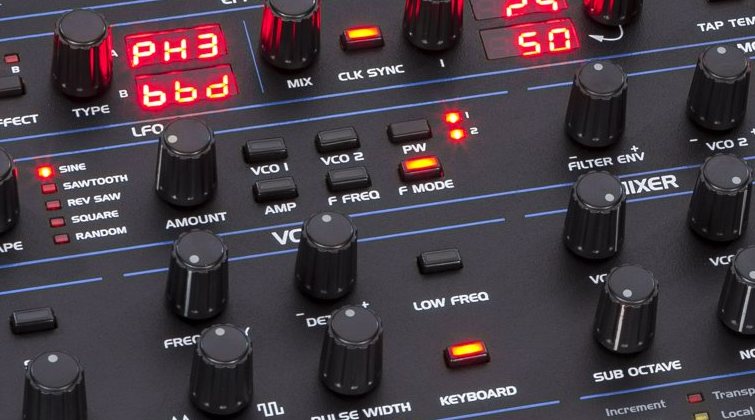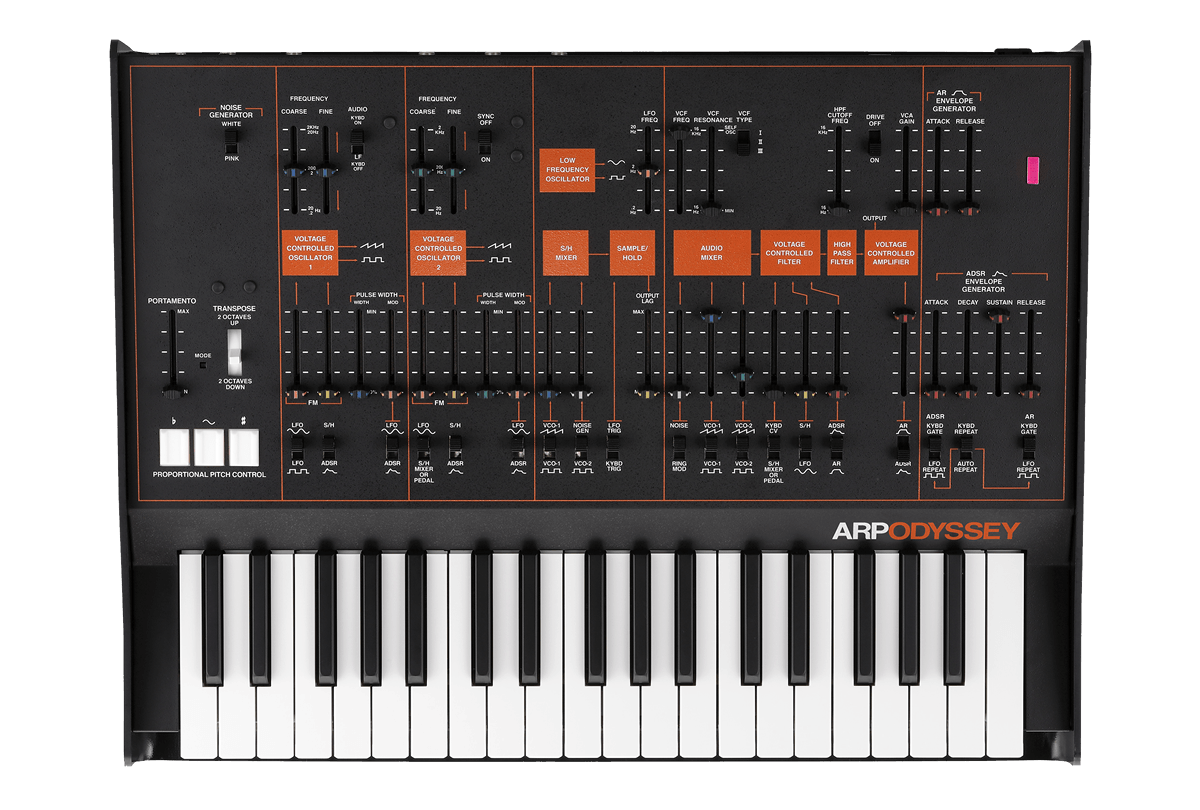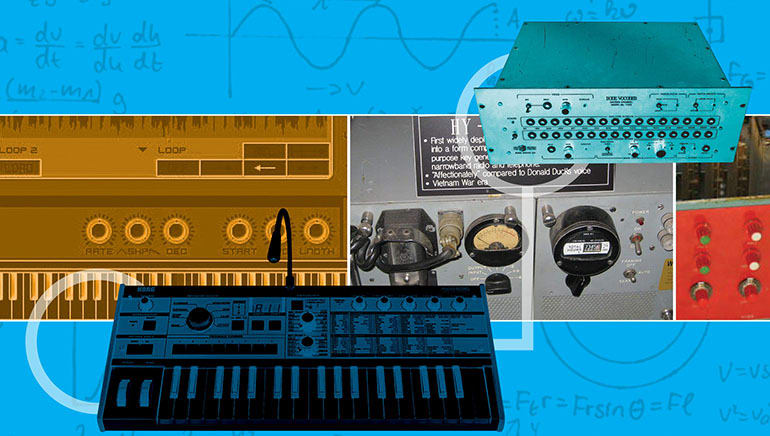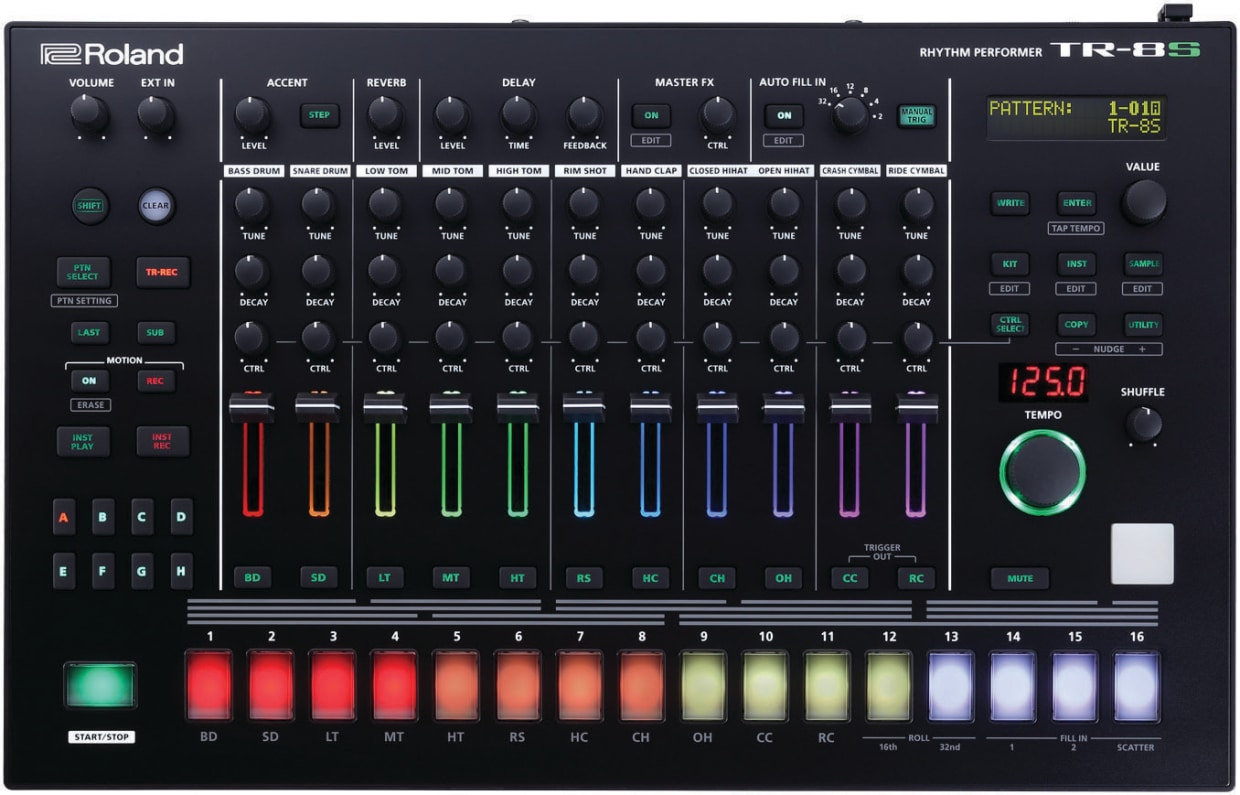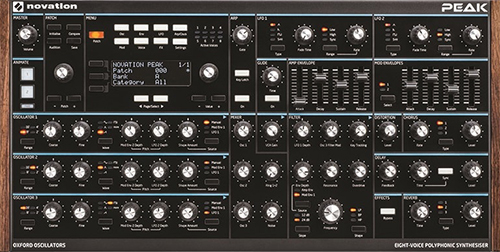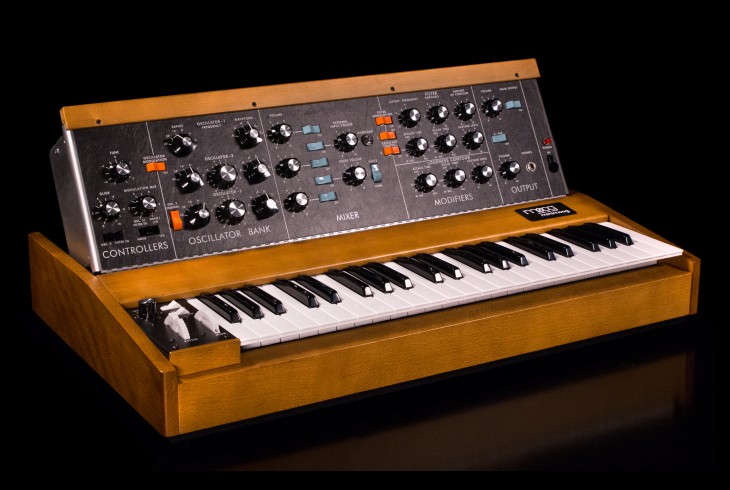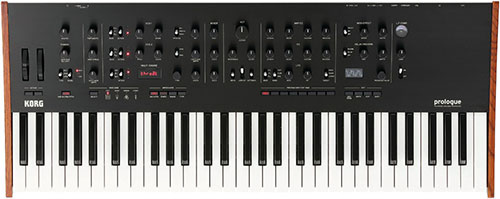Back in the early ’70s, the Moog vs. ARP “war” was just as passionate as the Mac vs. PC debate is today. At the time, the Minimoog and ARP Odyssey were the two dominant mainstream monosynths. On the Moog side, the Mini offered three oscillators, Bob’s massive filter, and ease of use. On the ARP side, the duophonic Odyssey included lowpass and highpass filters, hard sync, ring mod, and incredibly sophisticated modulation resources.
Korg’s ARP Odyssey re-issues are available in a tabletop version, a module version, and the Odyssei app.
Even now, the classic Odyssey’s features are capable of textures that we normally associate with modular gear, which makes sense as the Odyssey was basically a slimmed-down version of the 2600—arguably the synth that first brought modular to the masses. So with Korg’s reissue of the Odyssey available in three formats (keyboard, module, and the Odyssei iOS app), my Music Radar masterclass takes a closer look at its vast capabilities, using the tabletop version as our frame of reference.
LINK: https://www.musicradar.com/how-to/how-to-get-the-most-out-of-the-korg-arp-odyssey

